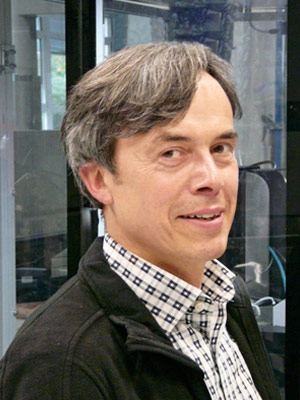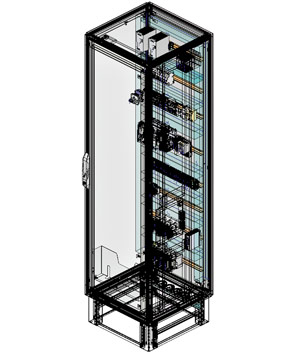Text Gerald Scheffels ––– Photography
Schaeffler Special Machinery in Erlangen is one of the key players in Germany’s mechanical engineering sector, with 1,700 staff at 13 sites across the globe. Somewhat unusually, it has so far focused exclusively on a single customer, albeit it one with a hugely important global brand – the Schaeffler Group. This leading international automotive and industry supplier employs 84,200 staff at its 170 sites located around the world and has a turnover of 14.4 billion euros.
INITIAL SITUATION: 4,500 PROJECTS A YEAR
The Special Machinery department makes the vast majority of the production equipment its internal customer requires throughout the Group. This includes developing and implementing complex assembly and testing lines for hybrid modules and for the new electric axle transmission systems – two highlights from a good 4,500 projects the department handles each year.
THE AIM: NEW TASKS, NEW CUSTOMERS
Orders for the Group’s own requirements have so far kept the special machinery engineers busy, but they are now looking to explore new horizons. The department is keen to share its expertise with external customers, too. Director Special Machinery Bernd Wollenick explains why: “We want to tap into new areas of activity and customer target groups.” The focus is on assembly and testing equipment, machining centres for grinding and honing, and production know-how in the fields of robotics, vision and handling systems, and production IT.
THE PLAN: STANDARDISING ELECTRICAL DESIGN ENGINEERING
The process of opening up to outside customers is driving the standardisation of the electrical design engineering software at sites such as Erlangen and Bühl in Germany and Taicang in China. These and other sites are already working with the Eplan Platform but use it very differently. The department has now tasked a project team consisting of key users with creating a globally standardised approach based on Eplan. Stefan Vietz, an electrical design engineer at the Erlangen site, explains what the team is doing: “We are developing a common, harmonised infrastructure on the Eplan Platform that will enable us, for example, to collaborate worldwide. That will mean we can put our capacities to the best possible use and make the development sites more flexible.”
STAGE 1: STANDARDISING TEMPLATES
Standardised templates are a prerequisite for a harmonised infrastructure. The team is following global standards, in particular EN 81346. As Sascha Jäger, an Eplan key user at the Bühl site explains: “We have developed standard-compliant templates that every employee – including everyone in manufacturing – understands.” This means both basic information and item management are standardised. It goes without saying that every item, including all the relevant data, is also stored in the ERP system. To simplify the design engineering process, the team has created items complete with macros and has a clear goal in mind: “We have assigned each item a data set that is as comprehensive as possible. That simplifies manufacturing.”
The basic principle here is as follows: “Whoever needs data should get it – whatever type is required.” Thanks to standardisation at item level, components can even be interconnected with the minimum of effort. Nor is it a problem if a customer ends up choosing a controller or electric motor from another manufacturer. “The relevant items are simply swapped and all the data for the new components is adopted,” says Jäger.
STAGE 2: ROLLING OUT 3D DESIGN ENGINEERING
At the Bühl site, Schaeffler is now already using Eplan Pro Panel to design the enclosures for production equipment in 3D. Pro Panel is even going to be rolled out worldwide in the future, because its benefits are clear.
Jäger gives the following example: “If a design engineer places a frequency inverter on a mounting plate, the drilling pattern is automatically stored and the data can be transferred to a Perforex system in DXF format. That saves time during both design and manufacturing.”
STAGE 3: USING EPLAN EVIEW
The next stage is to transfer the data from Pro Panel to the external cable configuration team. Vietz approves of this: “We then receive labelled cables with wire end ferrules or ready-to-use cable harnesses. That, too, saves time and is highly efficient – especially in the case of projects using the American UL standard.” The key users are currently exploring how Eplan eView can be applied and used during commissioning. As Jäger explains: “The manufacturing department and commissioning technicians can call up the circuit diagram on a tablet and jump directly to the relevant details.
You then no longer need to print circuit diagrams, because you always have the latest data to hand.” Vietz has discovered some further benefits of Eplan eView: “Redlining functions enable commissioning technicians to immediately flag up what they have changed on site. It’s even possible for three or four of these technicians to work on equipment at the same time and always have the same version of the documentation in front of them. That makes it easier to communicate with the programmers – and not only during commissioning.”
INTERIM GOAL: FIRST ORDERS DELIVERED
Two years after the project started, the key users haven’t yet achieved their ultimate goal, but they are well on the way to doing so. The key standardisation steps have been completed, Schaeffler’s Special Machinery department has already positioned itself on the external market and the first equipment orders have been delivered to non-Schaeffler customers.




